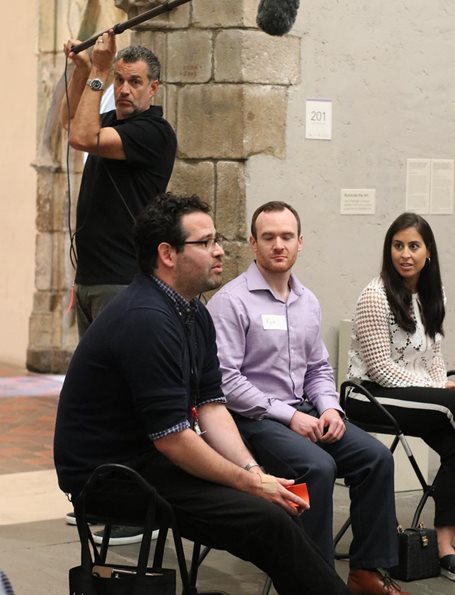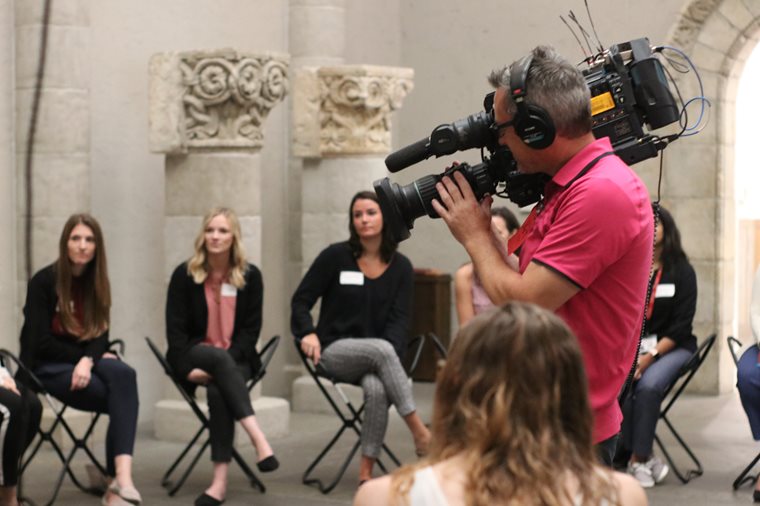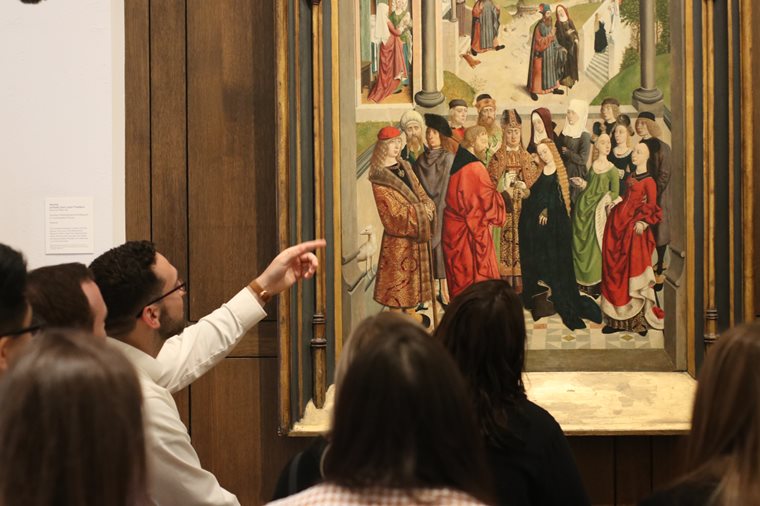 On average, people visiting the Philadelphia Museum of Art spend 17 seconds looking at a work of art. Not surprisingly, 17 seconds isn’t really enough time to observe and understand what’s going on in what can be a complex piece.
On average, people visiting the Philadelphia Museum of Art spend 17 seconds looking at a work of art. Not surprisingly, 17 seconds isn’t really enough time to observe and understand what’s going on in what can be a complex piece.
So how about spending 45 minutes with one painting? Is that enough time to “get the picture,” as it were?
It was for students in the Physician Assistant (PA) Studies Program Class of 2019, who graduate next week, that visited the art museum in the late summer for a workshop titled, “The Art of Observation,” which is a unique combination at the intersection of art and science. The workshop, designed by a team that included the museum’s educator Adam Rizzo, helps students improve their technical skills in observation, interpretation, perspective-taking, recognizing bias and empathy, with the intent of applying those same skills to clinical practice. It’s getting out of that black and white arena and into a gray area.
“The reason we’ve been doing this work the past five years with a number of different universities and different medical fields is that we think looking at artwork can translate to clinical practice,” said Rizzo, coordinator of course and pre-professional programs and museum educator. “This isn’t an art history lesson. You may get some art history out of this, but it’s really using art as a tool to practice skills that we think are relevant for your professional lives.”
NBC10 in Philadelphia will air a piece on the workshop on “Growing Greater Philadelphia,” hosted by Tracy Davidson, at 7 p.m. Tuesday, Oct. 15, the evening of graduation.
“I thought it was going to be more of us being walked through the art and told how to observe it. This picture is about this and this picture is about that, and less interactive,” said Kaitlin Van Winkler, ’19PA. “So it was really nice that I got to add my own opinion in and hear other people’s opinions as to how to interpret art and how to interpret that into our patient care.”

According to Rizzo, the workshop is designed to challenge the students to think differently.
“I’m going to ask you to just describe what it is you’re seeing without interpreting anything else,” said Rizzo as he gathered the group around what was to later be revealed as “The Marriage of the Virgin,” an oil on wood painting from the 1475 to 1495 period. “Instead of telling me what you think is happening, we’re just going to describe what we see. If you start veering into the interpretive mode, I’ll jump in. It’s natural to try and want to jump to the conclusion as quickly as possible. My job is to get us to pull back from that.”
Rizzo had the students visually divide the painting up into quadrants, adding details to the description in the group discussion. Once students believed they had exhausted one quadrant, they moved onto the next quadrant until they had observed and discussed the entire painting. There were no right or wrong answers, and everyone’s observations and perspectives were welcomed.
“I think it’s really important to be able to not only learn about the powers of observation, but then to hone them, to train them, to see the bias we talked about and how we can avoid walking into the room with a preconceived notion and misdiagnosing someone,” said Evan Schulz, ’19 PA.
According to Rachel Ditoro, MSPAS, PA-C, director of educational competency and strategic innovation in the PA program, the workshop at the Art Museum had previously been presented to the Class of 2020 while they were first years. The biggest difference she saw in the Class of 2019 was that they had been together for a few years and were familiar with working with each other, having already been in clinic or through their clinical rotations with each other.

“When we started (this workshop) with the Class of 2020, they were brand new to each other so they had to kind of work through trying to figure out each other, as well as trying to figure out what it was they were supposed to be doing here,” said Ditoro. “The Class of 2019 has been together for two years, they’re getting ready to graduate, so the dynamic is very different. They are comfortable with each other, open and willing to share, laugh with each other, play off each other. And, they bring in the clinical experience that they have.”
Ditoro believes this dynamic enabled the graduating class to experience the application of the observation separated from the interpretation and how that translates into removing judgment when examining a patient, but ultimately trying to decrease implicit bias.
After spending 45 minutes with the painting, Rizzo took the students to another area of the museum to perform a different exercise, one that had them pair off into teams of two and sit in front of a painting, one facing the painting and the other facing away from the painting. The one facing the painting was then asked to describe what was in the painting to the other by quadrant at times, who was then tasked with drawing what the other person observed, all within a four- to five-minute time frame.
The students left the Art Museum with a different perspective than they had when they walked in.
“When I came here, I was a little nervous as to what was going to go on and if it would really benefit me at all,” said Van Winkler. “I definitely learned that I need to look at everything objectively, not look at a patient and immediately make a judgment.”